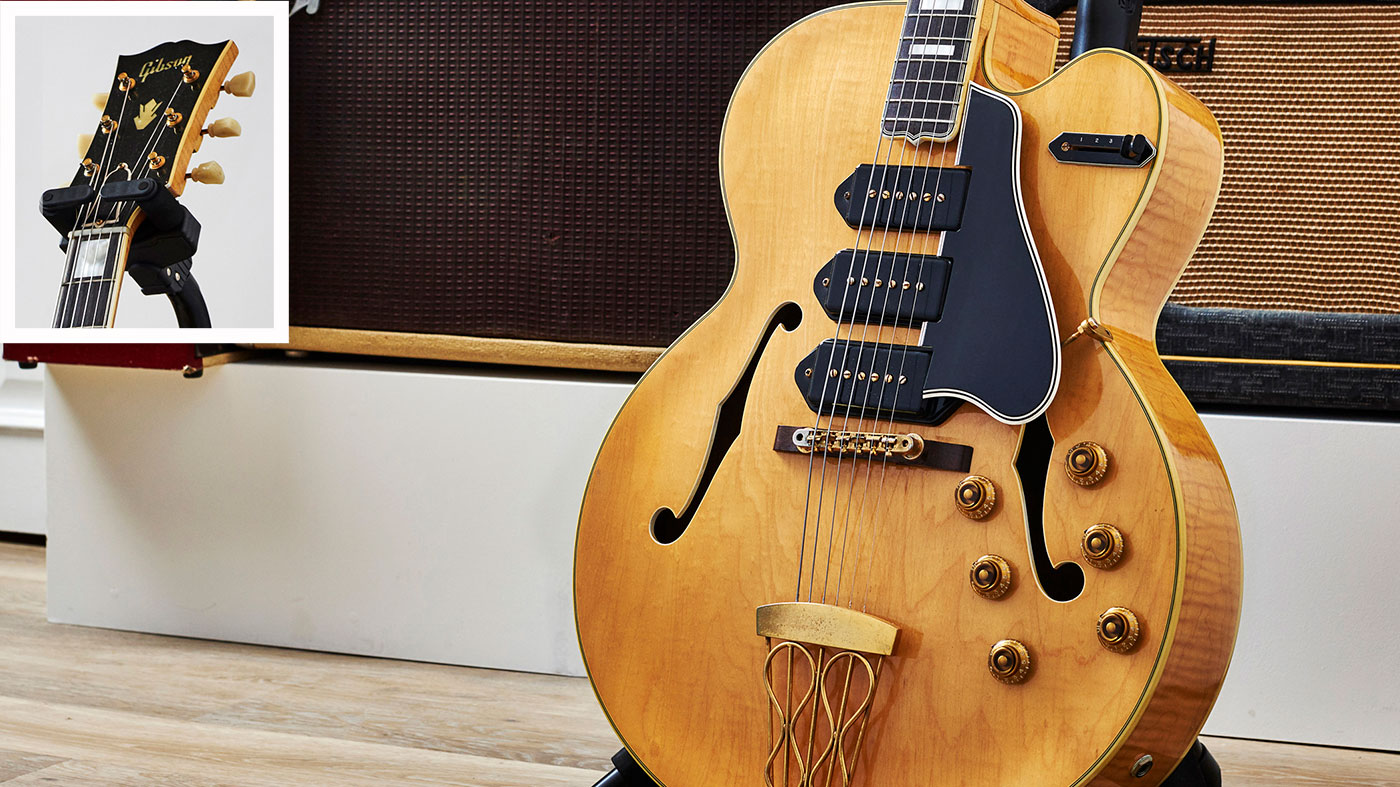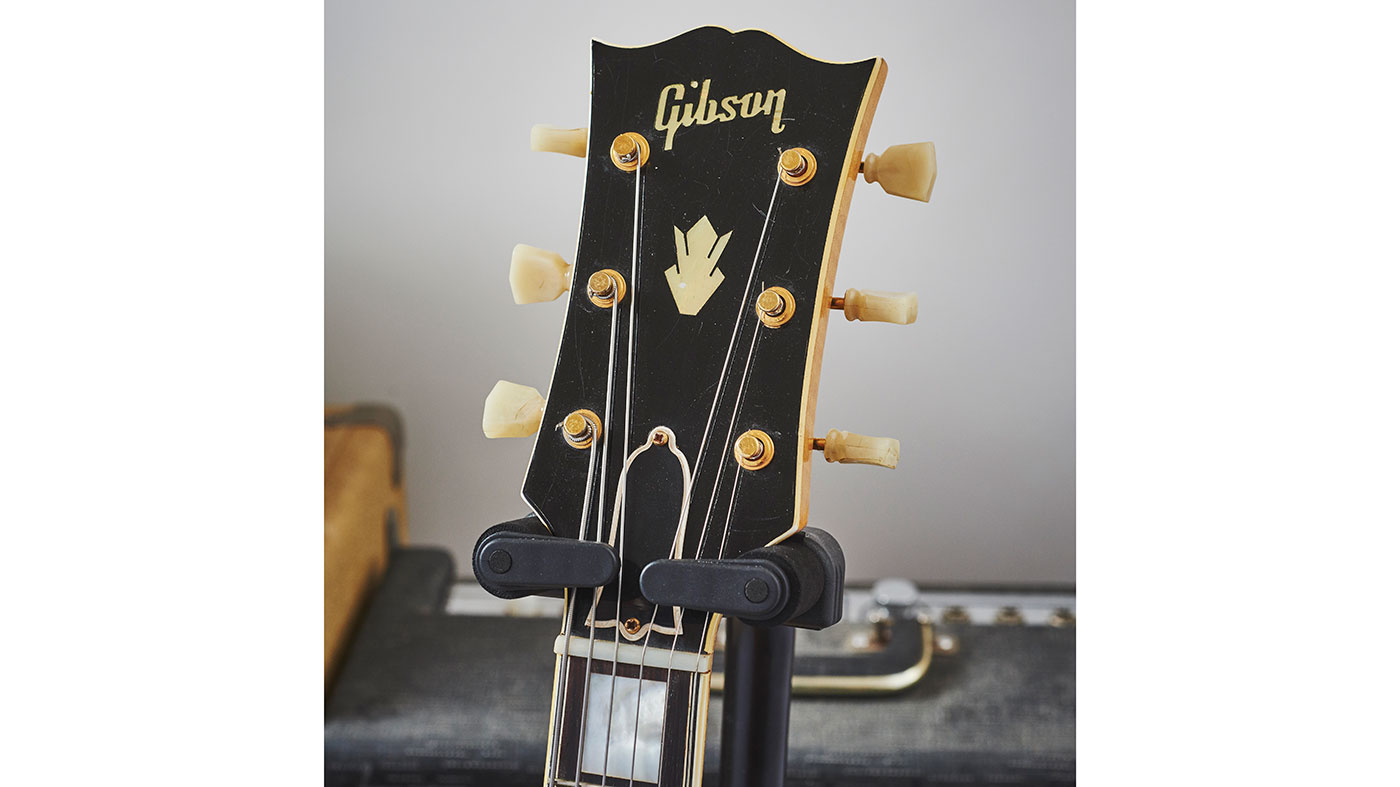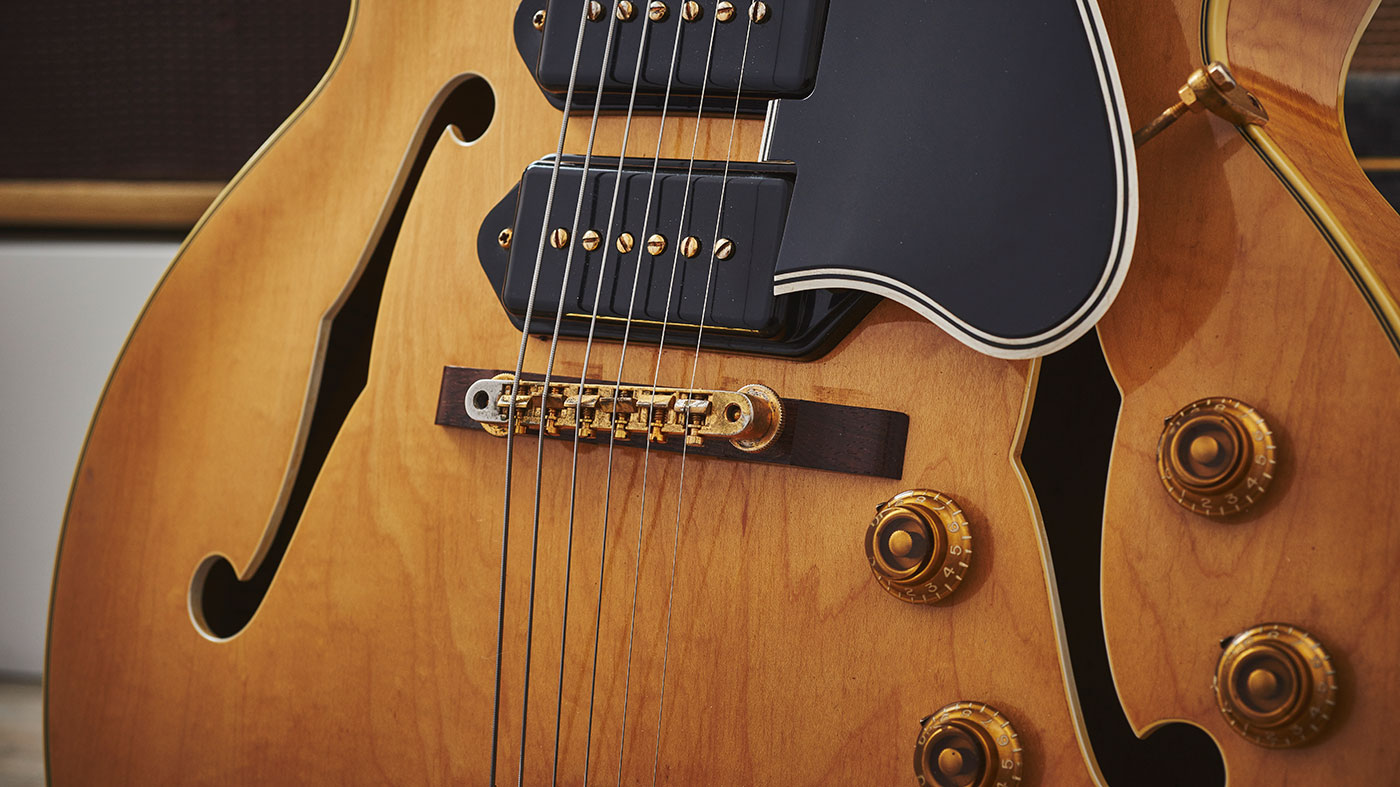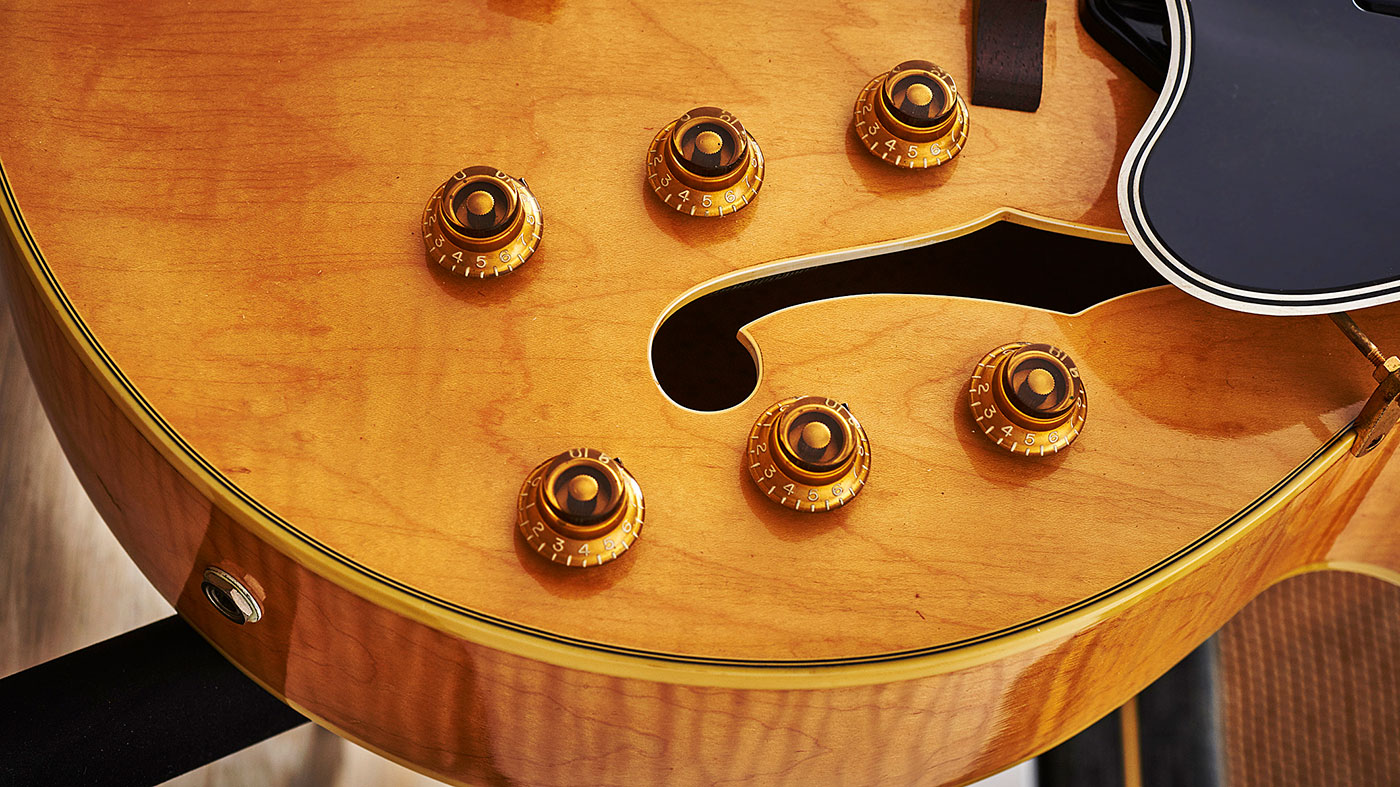Classic gear: Gibson ES-5 Switchmaster
Gibson’s multi-voiced tonal smorgasbord came in many guises...

Gibson released its 17-inch wide, single-cutaway, maple-bodied, maple-necked, double f-hole, triple P-90-loaded ES-5 electric archtop in both Sunburst and Natural finishes in 1949.
Complete with all the ornate trimmings that Gibson could muster - including gold- plated hardware, mother-of-pearl inlays and multiple-ply binding throughout - it was an apex of guitar craftsmanship and the result of an evolutionary course that can be clearly traced back to the company’s beginnings at the start of the 20th century.
Gibson was founded partly on the basis of Orville Gibson’s 1898 patent relating to carved arched instruments
Gibson was founded partly on the basis of Orville Gibson’s 1898 patent relating to carved arched instruments. Startingin 1902, its very first archtop acoustic guitars (the L, L-l, L-2 and L-3) appeared with round soundholes. In the pursuit of even greater projection and tonal enhancement, Gibson recruited sound engineer and master luthier Lloyd Loar, resulting in its first f-hole guitar, the L-5, in 1922. By 1935, while continuing on the quest for increased guitar volume and clarity, the L-5’s body size had advanced from 16 to 17 inches, and the following year, Gibson’s first Electric Spanish model, the ES-150, arrived, marking the dawn of a new era.
Soon after the groundbreaking ES-150 arrived in 1936 (complete with Charlie Christian pickup), Gibson increased its Electric Spanish range with the ES -100, ES-250 and ES-300 in 1938,1939 and 1940 respectively. However, things had only just got underway when World War II forced a temporary pause upon proceedings.
In the late 40s, Gibson recommenced ES production in earnest with its larger-bodied, P-90-equipped guitars, including the revamped ES-150, the ES-125, and the 17-inch ES-300, accompanied by its Premier/cutaway version, the ES-350. It was this guitar, alongwith the 17-inch L-5 Premier/cutaway, that inspired the ES-5’s complex design, and to which the guitar owes its unique look and sound.
In 1955 a pickup selector switch was added in place of the master tone control and the guitar was fittingly rebranded the ‘ES-5 Switchmaster’
When the ES-5 was originally released in 1949 (pre-dating the flagship Super 400CES and L-5CES electric archtops by two years), it was equipped with three individual volume knobs corresponding to each of its three P-90 pickups and a master tone knob. All pickups were active simultaneously, therefore varying the guitar’s sound was akin to operating a mixing desk, namely balancing multiple volume sources. This rather unwieldy arrangement was revised in 1955 - a pickup selector switch was added in place of the master tone control on the upper treble bout, and the guitar was fittingly rebranded the ‘ES-5 Switchmaster’. This new addition suddenly made it possible for each pickup to be selected individually, as well as in unison, which - alongwith individual volume and tone controls for each P-90 - made for a uniquely versatile electric guitar, both on stage and in the studio. Indeed, it soon became an instrument of choice for influential Sun Studio recording artist and king of rockabilly, Carl Perkins.
When the ES-5 Switchmaster was loaded with three PAF humbuckers in place of its P-90s in 1957, it changed the fundamental character of the instrument entirely, turning it into more of a distinctive rock ‘n’ roll machine than a progressive jazzbox (although it remained a little of both!), and as such, it became a go-to guitar choice for Frank Zappa and Steve Howe. Perhaps due to its odd blend of tradition and innovation, however, it didn’t turn out to be as popular as Gibson intended and was subsequently axed from production in 1962.
Get the MusicRadar Newsletter
Want all the hottest music and gear news, reviews, deals, features and more, direct to your inbox? Sign up here.
1956 Gibson ES-5N Switchmaster
Serial number
‘A'-prefixed five-digit number inked onto orange oval label on back (visible through bassf-hole)
Headstock
Single binding; mother- of-pearl Gibson logo and crown inlay; black painted taper on rear; blackface

Body
Laminated maple with pressed, arched top; single Venetian/rounded cutaway; five-ply top and back binding; single bound double f-holes; natural finish (hence the model name, ES-5N)
Pickups
Three P-90 high-output single coils with individual volume and tone pots; ‘bumblebee’tone capacitors; four-way pickup selector switch (1/2/3/ALL')
Hardware
Gold-plated ‘waffle/radiator back' Kluson tuners, Tune-o- matic bridge, tubular'double loop'tailpiece, pickguard bracket and screws

Plastics
Two-layer (white/black) bell truss rod cover; three black ‘dog-ear’ P-90 pickup covers; black hexagonal pickup selector surround; black Telecaster-style pickup selector switch tip; six clear, gold-backed bonnet knobs; bevelled five-ply pickguard; white plastic keystone tuner buttons
Neck
Glued-in two-piece bookmatched maple neck with centre stripe; pointed (L-5-style) rosewood fingerboard with five-ply binding and mother-ofpearl block inlays; natural finish

The Evolution of the Gibson ES-5 Switchmaster
- 1949 ES-5 released; 3x P-90s with individual volume knobs and master tone knob
- 1950 Bound f-holes now standard
- 1955 5-ply tqp/back binding replaces 3-ply type; Tune-o-matic bridge added Late
- 1955 Rebranded ES-5 Switchmaster; 4-way pickup selector switch
- 1956 Tubular ‘double loop’ tailpiece replaces parallelogram trapeze type
- 1957 3x new Seth Lover-designed PAF humbucking pickups replace P-90s
- 1960 Florentine /pointed single cutaway replaces Venetian/rounded type
- 1961 Serial number changes to digits
- 1962 Discontinued
- 1996 Release of ES-5P Reissue P-90, ES-5A Reissue Alnico & Switchmaster Reissue
Rod Brakes is a music journalist with an expertise in guitars. Having spent many years at the coalface as a guitar dealer and tech, Rod's more recent work as a writer covering artists, industry pros and gear includes contributions for leading publications and websites such as Guitarist, Total Guitar, Guitar World, Guitar Player and MusicRadar in addition to specialist music books, blogs and social media. He is also a lifelong musician.
“Its mission is simple: unleash the power of any amplifier or line-level source without compromise”: Two Notes promises a “watershed” in tube amp control with the Torpedo Reload II
MusicRadar deals of the week: Enjoy a mind-blowing $600 off a full-fat Gibson Les Paul, £500 off Kirk Hammett's Epiphone Greeny, and so much more












